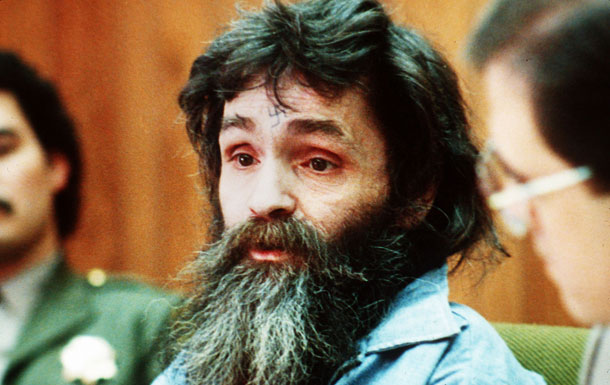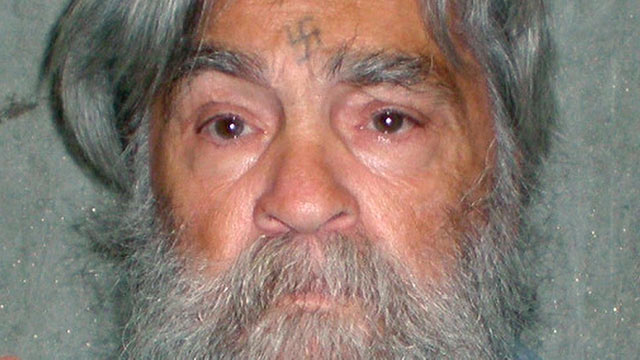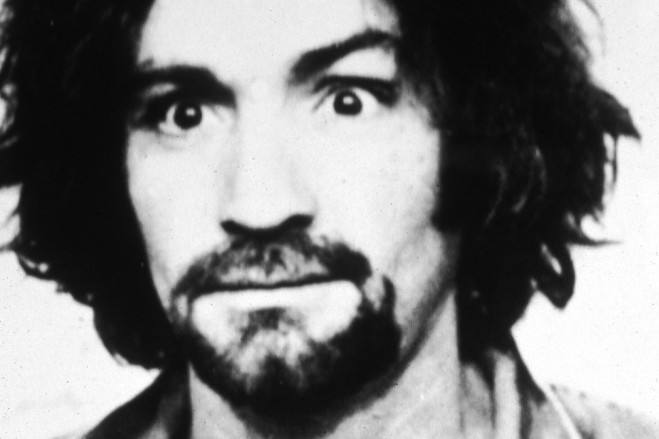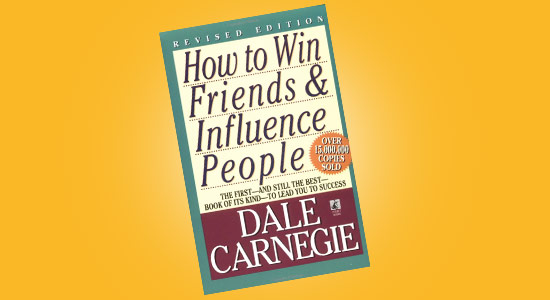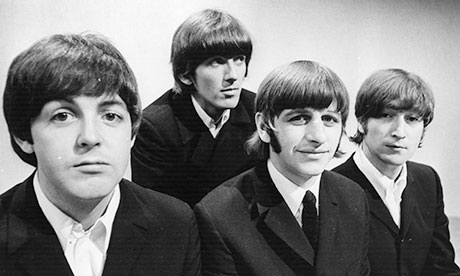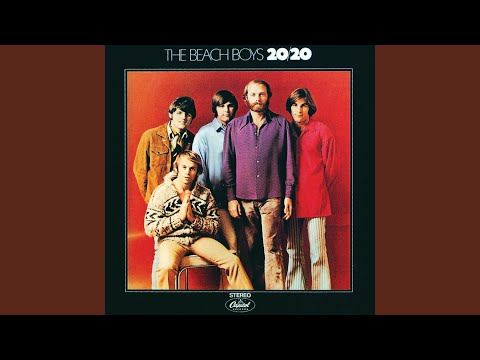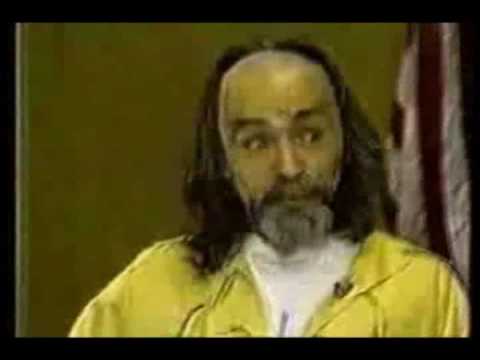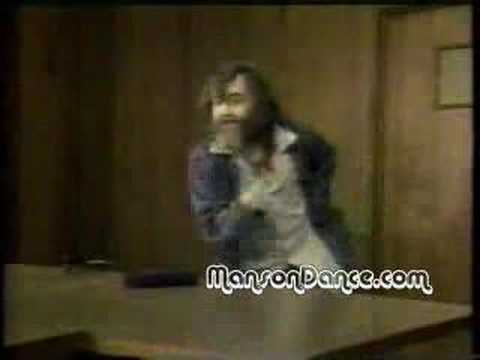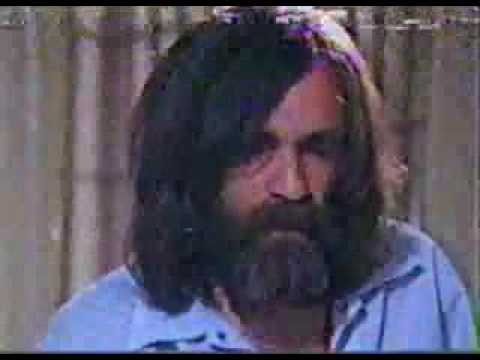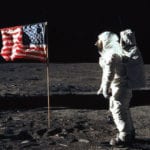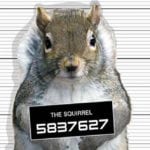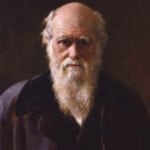Today, still in prison over four decades after the murders, Manson continues to hold sway over a handful of followers. And he remains a cultural presence. To a few, he is a herald of revolution. To others, he’s a cosmic punchline, whose insane proclamations keep providing fodder for existential laughter. To most, he is the very symbol of evil. He is, for better or worse, one of the more fascinating figures of the 20th century, a charismatic and shadowy figure lurking in one of humanity’s darker corners. And there’s more to Charles Manson than a wild-eyed loopy glare.
10He Never Killed Anyone Himself
It seems that Charles Manson, the man who for many personifies murder in the 20th century, has never actually physically killed anyone. In fact, he wasn’t present at either of the murders for which he was famously convicted. Although he participated in the binding of Leno and Rosemary LaBianca, he split before the actual killing began. And he was completely absent during the Tate murders. He was convicted under California statutes that allowed murder conspirators to be culpable via “vicarious liability,” which did not demand their presence at a murder to convict. Manson was present for another Family murder. Group member Bobby Beausoleil had bought a bad batch of mescaline from music teacher Gary Hinman. When Beausoleil tried to recoup his investment, Hinman said he had no money to give him. Beausoleil, along with Family members Mary Brunner and Susan Atkins, tied Hinman to a chair and called Charlie. Manson showed up and threatened Hinman, even slashing his ear with a sword. When he realized no money was forthcoming, he ordered Beausoleil to kill Hinman and make it appear to be the work of a militant Black Power group. Hinman was stabbed to death while chanting Buddhist prayers and Beausoleil wrote “Political piggie” on the wall in his blood. He also dipped his hand in the blood and left a “paw print” in an attempt to lay the blame on the Black Panthers. This appears to have been the first real effort to promote “Helter Skelter,” the race war that Charlie’s home-spun eschatology said would be won by the African Americans, who, in some weird twist of logic, would then ask Charlie to lead them after they found themselves incapable of ruling themselves. Beausoleil was obviously not the sharpest arrow in the Manson Family quiver, as leaving a handprint in the victim’s blood makes it a little tough to avoid conviction. Which is exactly what happened to Beausoleil in April 1971. He remains in prison to this day. Manson also ordered at least one other murder, that of Donald “Shorty” Shea, a ranch hand at Spahn Ranch, where the Family lived. Manson thought that Shea knew about the Tate-LaBianca murders and wanted to silence him permanently. He gave the job to his followers Steve Grogan and Bruce Davis, who took Shea to a secluded place on the ranch and tortured and killed him. Davis and Grogan were later convicted of the murder. In 1985, Grogan, considered borderline developmentally disabled and heavily drug-addled at the time of the murder, became the only member of the the Manson Family to be convicted of murder and released on parole. Manson was also convicted of Shea’s murder, even though he wasn’t there. He is also said to have shot a drug dealer, Bernard Crowe, but Crowe survived.
9He Was Once Known As “No Name Maddox”
Manson was born in a Cincinnati hospital to an unmarried 16-year-old named Kathleen Maddox. She did not identify the father, nor immediately name her child, so the infant was registered as “no name Maddox.” A few weeks later the child was named “Charles Milles Maddox” and was eventually given the last name “Manson” during Kathleen’s quickie marriage to a man named William Manson. Kathleen later sued a man identified as “Colonel Walker Scott” for bastardy (which was a noun as well as an adjective in rural Kentucky, where Maddox now lived). The court found in her favor, awarding her a $25 settlement and ordering Scott to pay $5 a month in child support. He never complied with the order and Manson has likely never knowingly met his biological father. The rumor that Manson’s biological father was black, which some thought a factor in his intense racism, appears to be groundless.
8He Was Once Happily Married
Much of Manson’s early life is shrouded in myths, some of which he encouraged. His mother was wayward and often in trouble with the law for theft and other petty crimes. However, she was not, as Manson himself would claim, a teenaged prostitute who traded young Charlie to a waitress for a pitcher of beer. Nor was he abused—in fact, he was doted on by the women in his family. But the combination of an absent father and a mother who was young and fond of running the streets herself didn’t exactly make for a nurturing lifestyle. When Charlie was five, Kathleen was sentenced to prison for robbery and Manson was sent to live with relatives in West Virginia. Charlie once recalled her hug, when they were reunited three years later, as his sole happy childhood moment. It didn’t last. With Kathleen unable to care for her son, Charlie was placed in a boy’s home when he was 13. He ran away, only to have his mother reject him. He then embarked upon a string of thefts and burglaries, got caught, and ended up in a juvenile detention center. He would be in and out of such institutions for the remainder of his young life. At 21, just out on parole, Manson met and subsequently married Rosalie Willis, with whom he seemed to find real happiness. He and Rosalie, three months pregnant, left to start a new life in Southern California. Unfortunately, they did so in a car stolen in Ohio, a charge that landed him back on probation and eventually back in jail, after he failed to show up for a hearing on a similar charge in Indiana. Rosalie came to see him regularly for a while, but eventually took up with another man and divorced Manson, shattering any chance he may have had of a traditional domestic life.
7He Learned How To Win Friends And Influence People From Dale Carnegie
Manson was in and out of prison all his life, but far from being a criminal mastermind, he was a small-time, non-violent offender who seemed content to live a lifestyle built around his institutionalization. While imprisoned, he took classes given by the Dale Carnegie Institute, based on Carnegie’s bestselling self-help book How to Win Friends and Influence People. The book was considered an essential read for salespeople and business managers at the time, endorsed by icons as diverse as Warren Buffett and Johnny Cash. Basically a primer on salesmanship and social success, Manson studied the book intensely—especially the chapter dealing with how to get others to take ownership of an idea or concept. He would endlessly practice the exercises from the book in his jail cell. Manson later became an expert at such manipulative tactics, studying the mind control methods of Scientology and its even creepier splinter group, the Process Church of the Final Judgment. But according to Manson biographer Jeff Guinn, it was the Carnegie training that allowed Charlie to make the transition from “low-level pimp” to “frighteningly effective sociopath.”
6He Was Taught How To Play Guitar By Criminal Royalty
Alvin “Creepy” Karpis was a criminal genius—the brains behind the “Ma Barker” gang and a former “Public Enemy No. 1,” he was considered by his criminal peers to be one of the keenest minds in the underworld. Manson met Karpis when both were imprisoned in the McNeil Island Penitentiary. A bit of a prison Renaissance man, Karpis played guitar quite well and was known to teach other inmates. When Charlie asked for lessons, Karpis initially thought Manson too “lazy and shiftless” to put in the effort. He was surprised when Charlie (whom he also described as having a “pleasing personality,” although “meek and mild”) became proficient enough to accompany himself, and even write his own songs. He also described Manson’s singing voice as “pleasant,” implying that the world was only a few misfiring neurons from avoiding a murderous psychopath, but gaining another Dan Fogelberg.
5He Was More Appalachia Than California
Despite his popular association with California, specifically Los Angeles, Manson did not make it out there until he was 32 and spent most of his time in the state behind bars. And though he seemed to slip effortlessly into the hippie counterculture upon his release from prison in 1967, he never lost his deep-seated hillbilly ideas, which frequently ran counter to the prevailing attitudes of ’60s California. He was raised in Kentucky and West Virginia and was shaped more by Depression-era Appalachia than the flower-power vibe pervading California at the time. His uncle, who was one of the few male role models he had, was an angry and recalcitrant defender of the Confederacy. Distrustful of “Yankees,” he frequently encouraged Charlie to resist their attempts at using public schools for indoctrination in their ideas. Manson in California was an open and aggressive racist when others were embracing tolerance, and spoke of a coming apocalypse while others were trumpeting the dawn of the Aquarian age. He never lost his Southern accent, often using it to coercive effect. And he got others to explore their own darker urges and fears, feelings not dissimilar to the paranoia and distrust that surrounded him as a youth in the oppressive shadows of the Appalachian mountains.
4He Had Extensive Celebrity Connections
Out of prison in 1967, Charlie put his skills to work, and soon developed a coterie of fawning young women, many just over 18 (and a few younger than that). Using crude Freudian psychology, as well as hallucinogenic drugs and the skills he learned in the Carnegie classes, he got them to buy into a new theology he was devising, with Charlie himself at the center as a messianic father figure. One of the first to be intrigued by Manson was Deirdre Lansbury, daughter of Angela Lansbury, famous as the star of Murder, She Wrote and The Manchurian Candidate, a film about manipulation and mind control in which a man is brainwashed into becoming a controllable assassin. The parallels between Manson and the character she plays in the film are, when seen now, a little unnerving. Deirdre Lansbury didn’t hang around long enough to participate in any of the Family’s darker activities, but Charlie now had his hook. Los Angeles at the time was a city full of young women, impressionable and disenchanted with what they saw as an empty suburban lifestyle. Charlie soon had a small army of “Manchurian Candidates” who would do his bidding, no matter how extreme. He frequently sent them out to work as prostitutes and thieves. One day, while hitchhiking, a couple of Manson’s followers were picked up by Dennis Wilson, a member of the Beach Boys. Wilson was known to hang out on the fringes of the Los Angeles counterculture, looking for a good time. Taking the girls back to his beach house, they called Charlie, who showed up with drugs, his guitar, and a few more willing young women. Wilson was fascinated by Charlie, as much for his Svengali skills as for the music he composed. He allowed the Family to live at the house for a while, even though things got a little too intense even for Wilson and he soon left to stay at another house he owned. But on one visit he brought over his friend, music producer Terry Melcher. Melcher, producer of hits like the Byrds’ “Turn, Turn, Turn,” was genuine Hollywood royalty, the live-in boyfriend of actress Candice Bergen and the only son of screen legend Doris Day. Melcher was unimpressed by Charlie’s music, although he was mildly intrigued by the idea of making a documentary about Charlie, his tribe, and their whole weird scene. Melcher strung Manson along for a bit, then backed off completely when he started to suspect Charlie was more than a little unhinged. Not long afterward, he and Bergen moved out of their house on 10050 Cielo Drive, and it was leased to Hollywood director Roman Polanski and his wife, Sharon Tate.
3Though He’s Known As A Beatles Fanboy, He Preferred Bing Crosby
Wilson’s manager eventually kicked the Family, a group that now included a few men, out of Wilson’s residence, and Charlie set up a commune on the grounds of the Spahn Ranch. In exchange for a place to stay, he and his followers traded manual labor, as well as the sexual favors of the girls, to the ranch’s owner, 80-year-old George Spahn. Evenings were spent with Charlie holding court. After dosing his minions with hallucinogens, Charlie would play his guitar and expound on his increasingly twisted theology. The world, he said, was spinning out of control. There was a race war coming, and the African Americans were going to win. While this was going on, Charlie and his Family would be hiding out in the desert, biding their time. After a while, the new black society would realize they couldn’t keep things together by themselves. They would need a strong white man and would eventually come begging Charlie to lead them. Thus would begin Charlie’s reign over the Earth. In 1967, the Beatles, then at the peak of their popularity, released an album simply called The Beatles, but commonly known as The White Album. Charlie told his congregation that the Beatles were the Four Horsemen of the Apocalypse described in the Book of Revelation. Citing their guitars as their “Breastplates of Fire” (Revelation 9:17), Charlie claimed The White Album contained clues to the apocalypse. The song “Piggies” described the gluttonous and complacent white establishment. “Revolution” was their call to arms. “Revolution 9,” a jarring and eerie collection of sound effects including screaming, a car wreck, and a disembodied and flat voice repeating the phrase “number nine,” was meant to dramatize the coming race war. And the war would be called “Helter Skelter,” which was another song on the album. The song’s lyrics exclaimed it was “coming down fast.” And it was their job, Manson preached, to bring it on even faster by murdering the “piggies” and making it look like militant Black Power groups were fomenting “revolution.” The song was actually about a large amusement park slide. And Charlie’s real motive was probably to send a message to Terry Melcher, who he felt had cost him his big break as a musician. Charlie didn’t even much care for the Beatles. He was older than most of his followers and stated in several interviews that he, like other members of his generation, preferred Bing Crosby, Perry Como, and cowboy balladeers like Frankie Laine.
2His Music Has Been Widely Covered
Manson’s own music was as manipulative as he was, meant to ensnare. He developed a folkie style, and sprinkled it with nebulous lyrical forays into the kind of dime-store mysticism popular with the hippies. He never found musical success in his time as a free man, but after the murders, his infamy created a kind of fascination with his songwriting. His songs have since been covered by a wide variety of artists, including Guns N’ Roses, Marilyn Manson, Redd Kross, and actor/biological curiosity Crispin Glover. His only real success before the murders was a Beach Boy track called “Never Learn Not to Love” on their 20/20 album (it was also released as a B-side to one of their singles). Dennis Wilson, with Manson’s knowledge, reworked a Manson song called “Cease to Exist,” tweaking the lyrics and melody. However, when the song was released, Manson was given no credit. Manson was furious, and listening to both, it’s easy to understand why. Who knows how history might have changed if Wilson had done the right thing and given him co-credit.
1His Prison Interviews Are Pure Performance Art
There is debate on Manson’s mental health. Some think he’s insane, others think he’s acting. He’s certainly not “normal,” but whether his rambling, hyperactive monologues are forced or not, only Charlie really knows. Regardless, he became, about 15 years into his incarceration, an instant boost to the careers of television journalists like Tom Snyder and Diane Sawyer. Sagging television ratings? Sweeps week? A half-hour of Charlie spinning his particular brand of jabberwocky was the answer. Viewers would flock to their televisions sets, ready to take in the antics of the Pied Piper of Criminal Insanity. He would mug at the camera, grinning and scowling his way through some kind of quasi-zen koan narrative. Shifting, sometimes jarringly, from a soft-spoken whisper to a full-throated growl, Manson would rant nonsensically about nature, culture, and the human condition, presenting himself as Exhibit A to every subject. Veering from self-congratulatory to self-deprecating, but always self-serving, these interviews became true “water cooler” moments, talked about for days afterward. Bootleg videocassettes were passed around, and quotes from the interview were bandied about in business meetings. In the end, Charlie got what he wanted. The piggies were paying attention.
+Bonus Videos
Manson’s full collection of interviews are just too crazy to fit into one entry. So if you have a taste for the macabre and time to kill, here are a few more to enjoy: Brent Sanders is a writer, musician, and freelance haberdasher who lives in a bomb shelter in suburban Appalachia. He occasionally rants about music, politics and sports at http://www.ubermullet.com.
